Majestic, regal, and beautiful, the Philippine Eagle is the most extraordinary raptor in the world. Sadly, it’s also critically endangered, as there are only about 400 Philippine Eagles flying freely in Philippine forests today. They mainly suffer from habitat loss and human encroachment. But the bright side is, continuous conservation efforts are being made by local communities and governments to save the Philippine Eagle from extinction. If you want to learn more fun facts about the Philippines’ national bird, read on!
Also read: A Guide to Street Food in The Philippines: What to Eat & Expect
1. Philippine Eagles are endemic to the Philippines
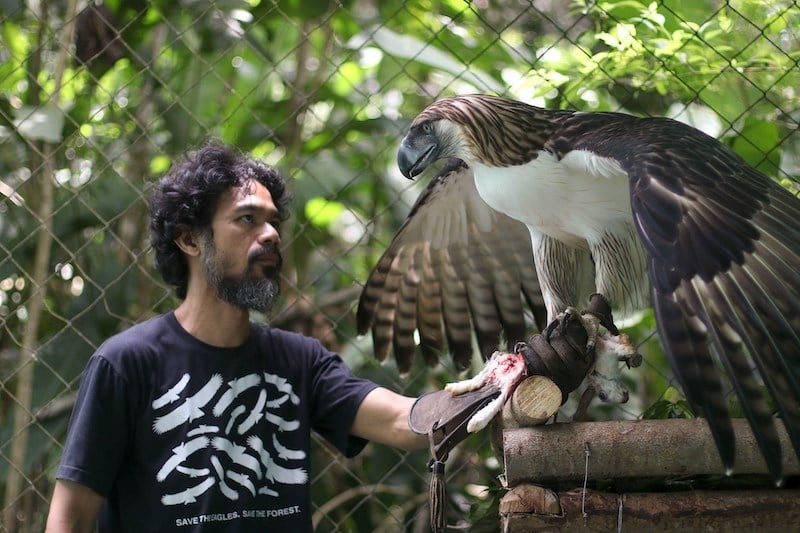
Image credit: Philippine Eagle Facebook Page
As their name suggests, wild Philippine Eagles can only be found in the Philippines; a few are found in Samar, Leyte, and different parts of Luzon. Mainly, they’re found in Mindanao, where tourists can also visit the Philippine Eagle Foundation in Davao City to learn more about Philippine Eagles and see the magnificent raptors for themselves. This is the only conservation centre in the world that aims to increase the population of Philippine Eagles through natural pairing and cooperative insemination.
2. The Philippine Eagle is arguably the largest eagle in the world
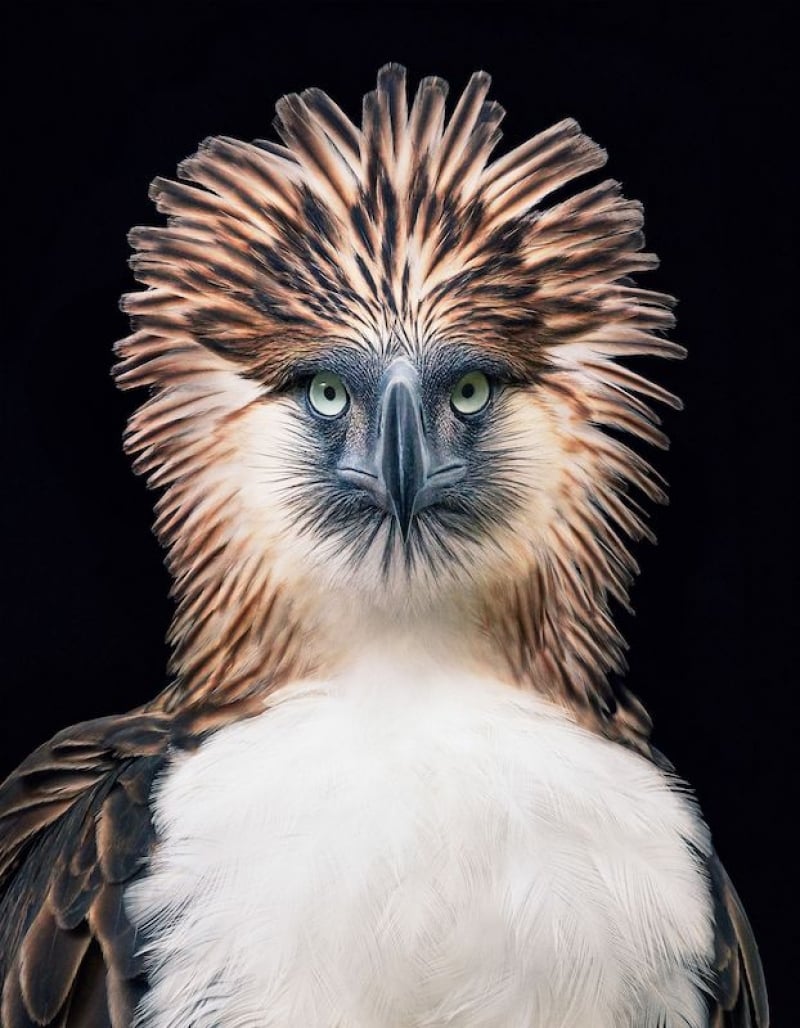
Philippine Eagles stand at least three feet and have a wingspan of 6 to 7.4ft, with males weighing up to 4.8kg, while females can weigh up to 6.8kg. Although there are a few birds of prey whose wings are longer, those of the Philippine Eagle are broader and have greater surface areas than the wings of any other eagle.
To give you more fun facts, the Philippine Eagle is impressively agile in the air despite its size, making it a deadly and successful aerial hunter. They have also been known to hunt with their mate, one distracts the prey while the other attacks from behind.
3. It’s famous for being a monkey-eating eagle
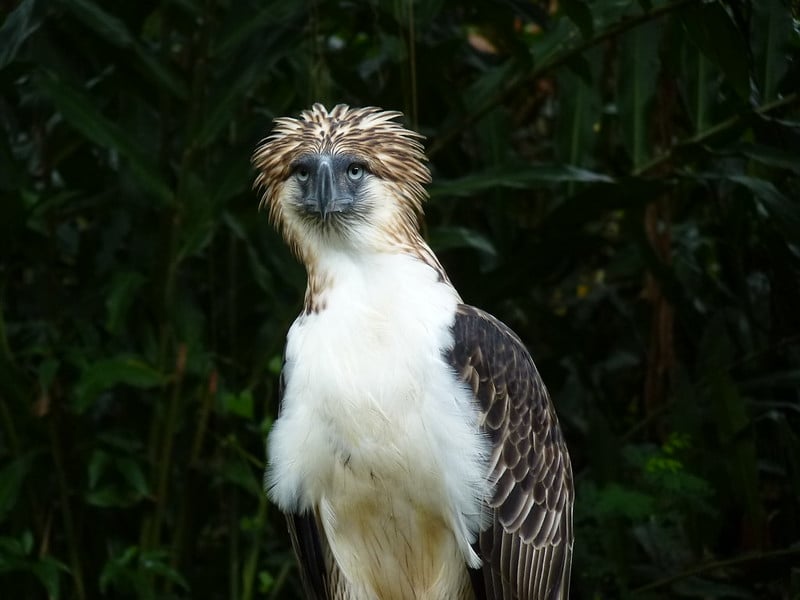
Image credit: The Wandering Angel
In the early days of observing the Philippine Eagle, it was believed that the eagles preyed exclusively on monkeys, which earned it the nickname “Monkey-eating Eagle”. But over time, experts have debunked this belief as they discovered that Philippine Eagles not only eat monkeys, but also lizards, snakes, smaller mammals like dogs, pigs, lemurs, civets, and even other birds of prey. Its claws are also so strong as to rip an animal’s carcass open. Basically, the eagle’s diet depends on the available species found on the island and forest they choose to live in.
Note: The Philippine Eagle Foundation in Davao has stopped feeding their Philippine Eagles smaller birds like chicken and quail ever since the bird flu outbreak in 2017. Bird flu is easily transmitted from bird to bird.
4. The Philippine Eagle is monogamous
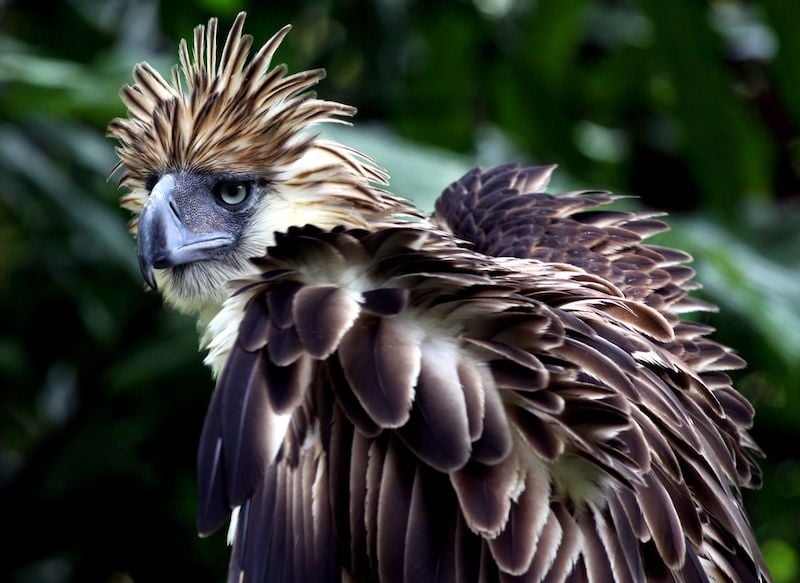
Believe it or not, the Philippine Eagle is an eagle of faith…fullness. It will only choose one mate to breed with in its entire lifetime unless its mate dies or is killed. In which case, the Philippine Eagle will be naturally disposed to choosing a new mate to start a family with.
5. It takes a pair two to three years to produce one egg
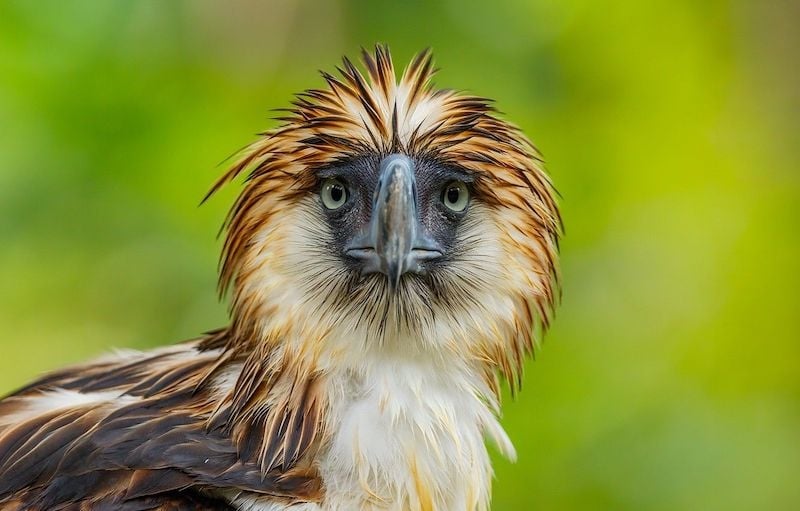
This is what makes conservation efforts challenging and even more delicate: Philippine Eagles not only reproduce with just one partner, but it also takes them years to hatch a single egg. What’s more, although females reach sexual maturity at the age of five, males tend to reach it at the age of seven. Along with the threat of habitat loss and hunters, these challenges make the Philippine Eagle the rarest eagle in the world.
6. The juvenile eagle stays dependent on its parents for a long time
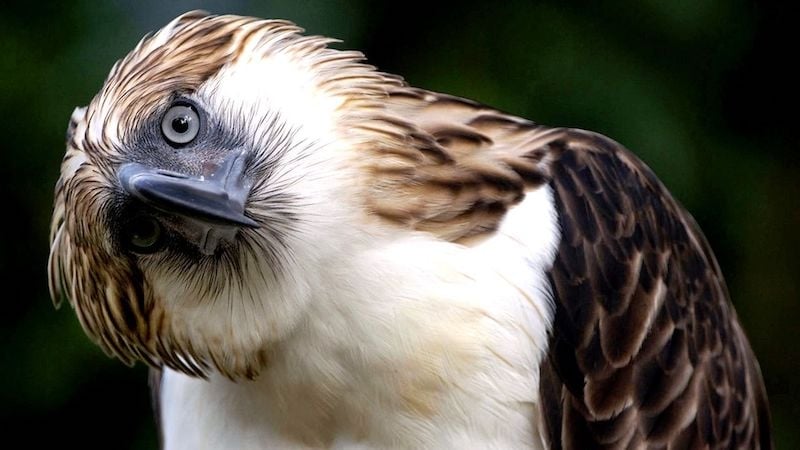
To start, the incubation of an egg takes 60 days while the couple takes turns sitting on the egg. When it hatches, the parents of course hunt to feed their baby eagle. They also take turns shielding the eaglet from the changing weather (sunshine and rain) until it’s seven weeks old.
In less than a year, the juvenile learns to make its first kill and leaves the nest at five to six months. However — here’s the real fun fact — it continues to rely on its parents who in turn continue to provide food for a total of 20 months. One would think that this trait accurately reflects the family culture of real Filipinos, who normally don’t leave their parents’ houses until they’re married. Well, that validates the Filipino-ness of the Philippine Eagle!
7. Philippine Eagles live 30 to 60 years
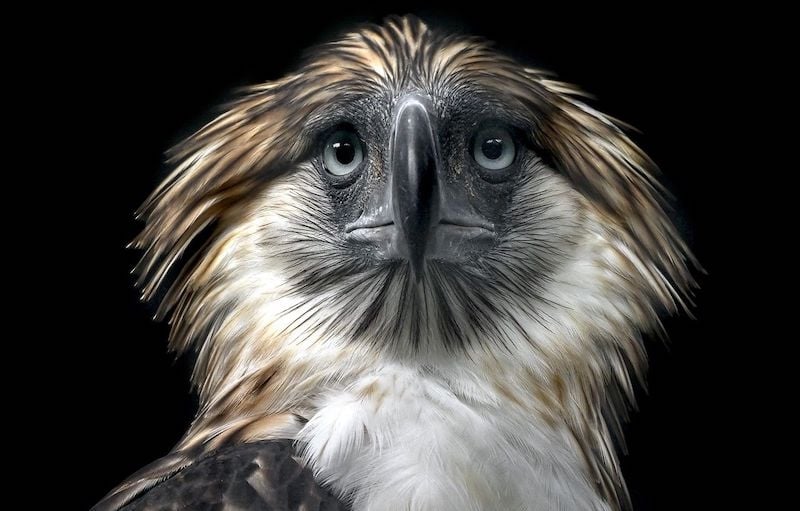
Even though the Philippine Eagle’s breeding process is very challenging, what’s great about these eagles is that they have a pretty long life span, ranging from 30 to 60 years. If given the proper protection and space in the wild (physically and habitat-wise), a pair of Philippine Eagles can ideally produce 15 to 20 offspring in their lifetime. But because of deforestation and shootings, wild Philippine Eagles tend to live less than 40 years now and produce even fewer eggs than they’re supposed to.
8. The Philippine Eagle has a shaggy head crest that it can raise and lower at will
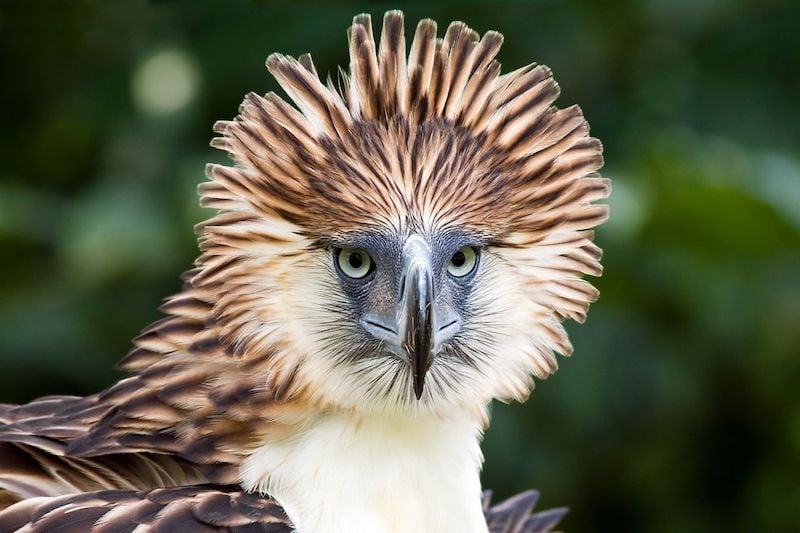
Among the fun facts about the Philippine Eagle, its hairdo tends to steal the spotlight. This eagle’s feathers are predominantly white and brown when it reaches full maturity. The most striking feature of the Philippine Eagle is the crown-like fan of feathers on its head, commonly referred to as the eagle’s crest. And yes, the eagles can choose whether or not they want to show off their unique crest.
The Philippine Eagle’s shaggy crest also resembles a lion’s mane and underscores the symbolic, cultural relevance of the eagle to the Philippines. Like all apex predators, Philippine Eagles play a pivotal role in their environment. To protect the Philippine Eagle, communities must ensure that they have prey to feed on and verdant forests to take shelter in. Thus, efforts in conserving the Philippine Eagle are also efforts to conserve all the plants and animals in its territory.
Matched with its noble-like features, there is clearly no other bird in the Philippines more regal than the Philippine Eagle. In Tagalog, it’s even called haribon, which translates to “bird king.”
9. It’s the only eagle that has blue-grey eyes
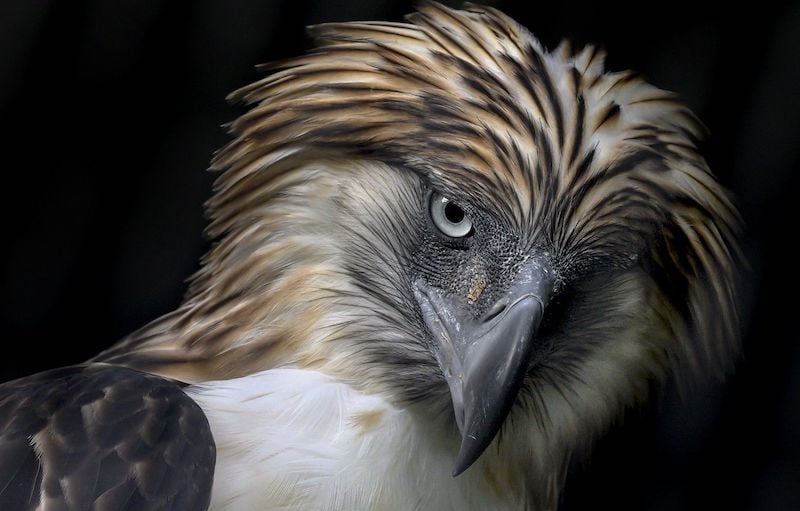
Name an eagle that has haunting blue-grey eyes aside from the Philippine Eagle. We’ll wait.
Besides the striking eye colour of the Philippine Eagle, its eyesight is equally impressive. It has the ability to see eight times clearer and farther than human eyes and can spot prey that’s 1.24 miles away. Just imagine making eye contact with those sharp blue-grey eyes. Would you be able to handle a staredown?
10. Philippine Eagles are inherently territorial
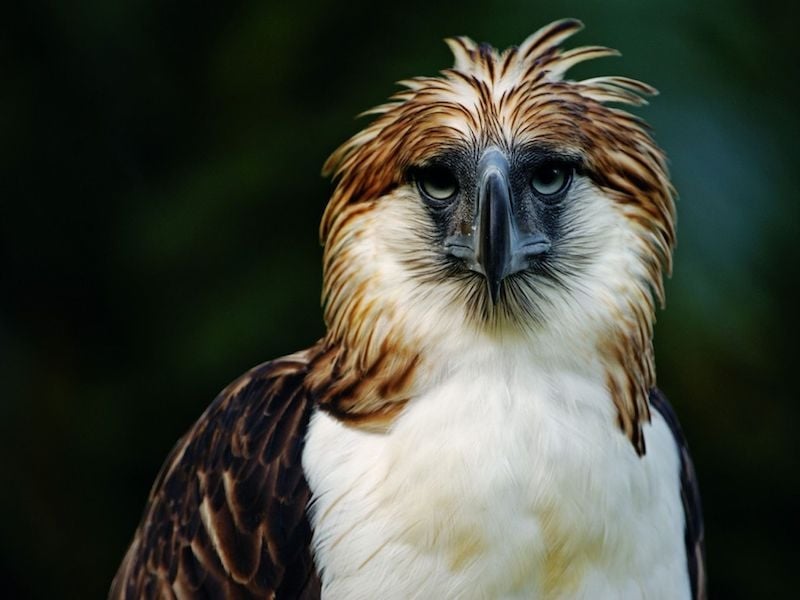
Philippine Eagles don’t suffer other eagles within its territory. A wild pair normally needs 7,000 to 13,000 hectares to survive and start their own family. If other eagles encroach into their borders, they have no choice but to fight these other eagles away, even if they need to be violent. This creates even more challenges to the survival of Philippine Eagles. As more and more forests are destroyed, there are fewer places for a new Philippine Eagle to find its territory, with the threat of other eagles always a possibility.
11. The Philippine Eagle carries many titles
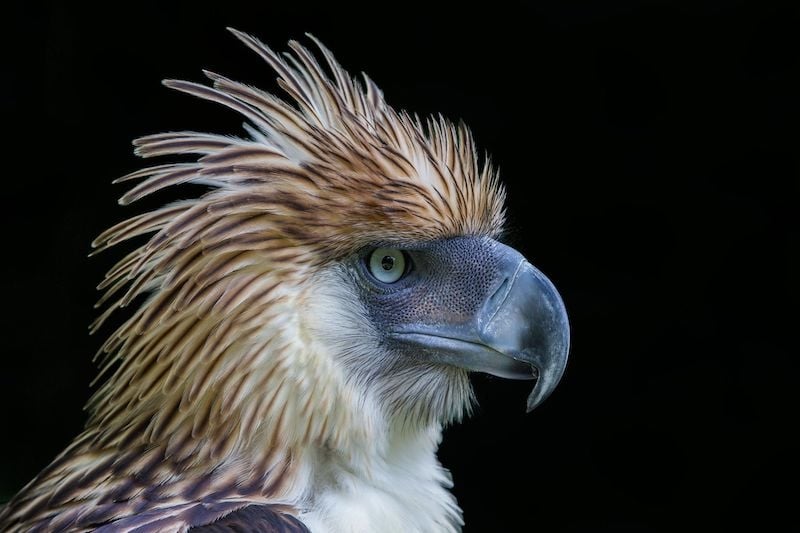
This can’t be a list of fun facts about Philippine Eagles without going through all the titles this eagle has accumulated throughout its existence. Aside from haribon (“bird king”), “world’s largest eagle,” and “monkey-eating eagle,” it is also called “the crown jewel of the Philippines’ biodiversity,” “lord of the forest,” and the “air’s noblest flyer.” Which one do you like best?
12. You can also see a pair of Philippine Eagles in Singapore’s Jurong Bird Park
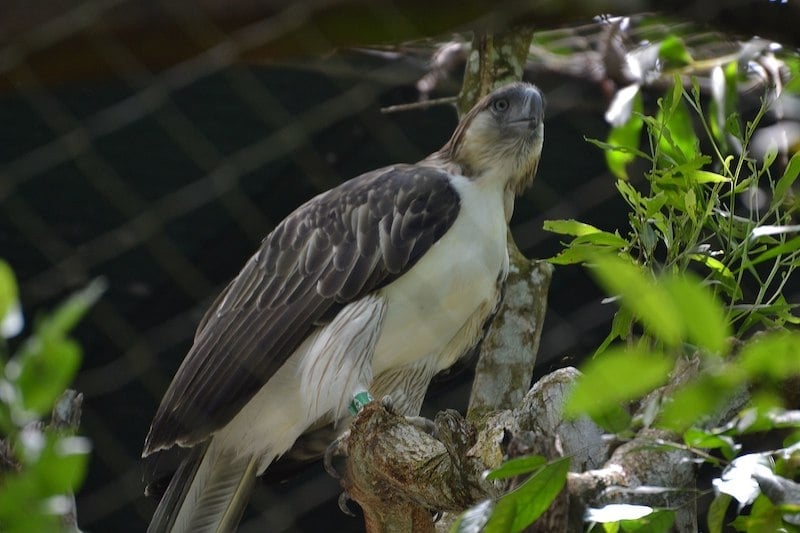
Image credit: The Philippine Eagle
So far, Singapore is the one and only country that the Philippines has partnered with to help conserve and breed the Philippine Eagle. To mark 50 years of friendship between the two countries in 2019, the Philippine Eagle Foundation loaned a pair of Philippine Eagles to Jurong Bird Park on a renewable 10-year conservation contract.
This effort was also in anticipation of a possible spread of bird flu among raptors in the Philippines. In case such a predicament occurs, the gene pool of the Philippine Eagle would be safeguarded in Singapore. Aside from this, the Philippine Eagle Foundation hopes to see the pair they loaned to Singapore continue to propagate in captivity. Should the pair produce an egg, the juvenile will be returned to the Philippines.
Another fun fact about this arrangement is that other Philippine Eagles get a chance to travel to Singapore too. After 10 years, the previous pair will be sent home to the Philippine Eagle Foundation and will be switched with a new pair of Philippine Eagles. They even have passports!
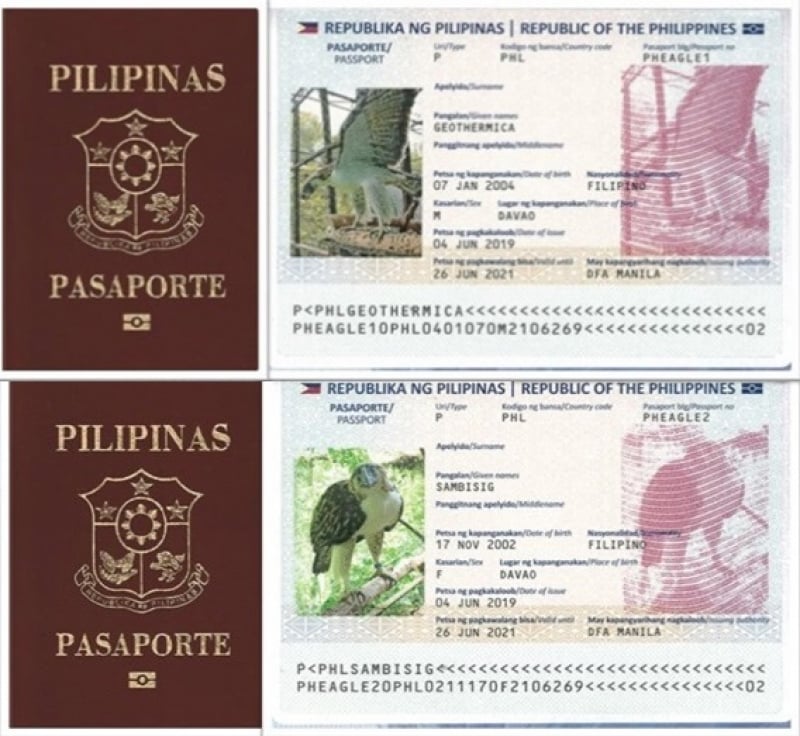
Image credit: Department of Foreign Affairs
How you can support Philippine Eagle conservation efforts
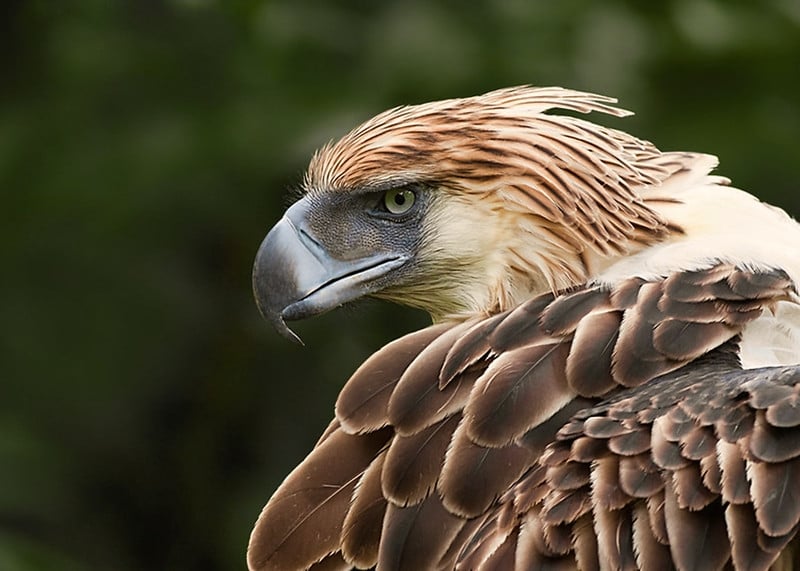
Image credit: Sinisa Djordje Majetic
The best way to help Philippine Eagles is through the Philippine Eagle Foundation in Davao City. Not only does the foundation breed and take care of these eagles in captivity, but they also nurse rescued Philippine Eagles back to health so that they can fly home to the wild forests. For starters, you can donate to the foundation, which will help provide not just for the food and shelter of Philippine Eagles, but also those of other endemic birds being conserved in the foundation. Donations also sustain forest guards and biologists who perform patrols and eagle monitoring within release sites.
You can also adopt an animal to help provide for them the whole year, or purchase some cute merchandise from the foundation’s online shop. Interested to visit the Philippine Eagle Foundation? Book a tour here.
Also read: Singapore Remains Second Most Powerful Passport in the World
With approximately 400 Philippine Eagles left in the wild, it’s a long road to this majestic bird’s recovery. But with enough public awareness and responsible conservation efforts, we can still give hope to the eagle kings (and queens). Consider yourself lucky if one day, you fly to one of the Philippine islands that these eagles call home and spot the great Philippine Eagle soaring against a clear blue sky!





